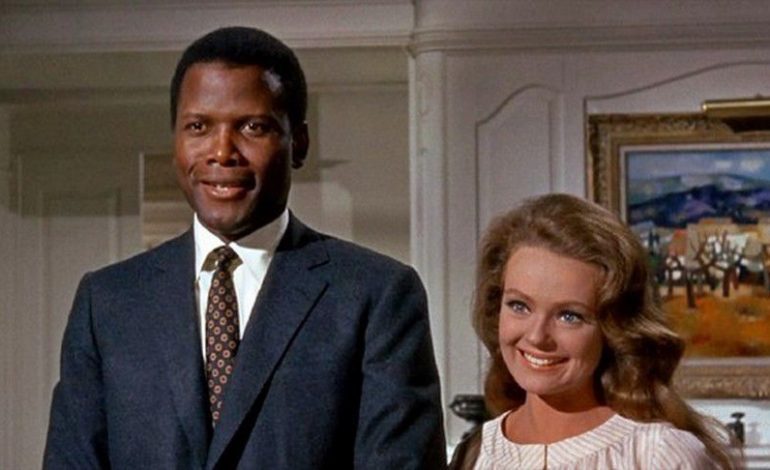

It’s a story as old as time: a young girl brings her new boyfriend home to meet the family. His parents and a priest end up crashing the party. Then before the meal is served, half the room turns out to be more racist than they’d like to admit. Guess Who’s Coming to Dinner tells this story with an incredible cast and impeccable script that has kept it fresh and relevant for over fifty years. As one of the first movies to present interracial marriages in a positive light, it is important and historic. As a love story, it is funny, heartwarming, and entertaining. It remains a classic, even when it shows its age.
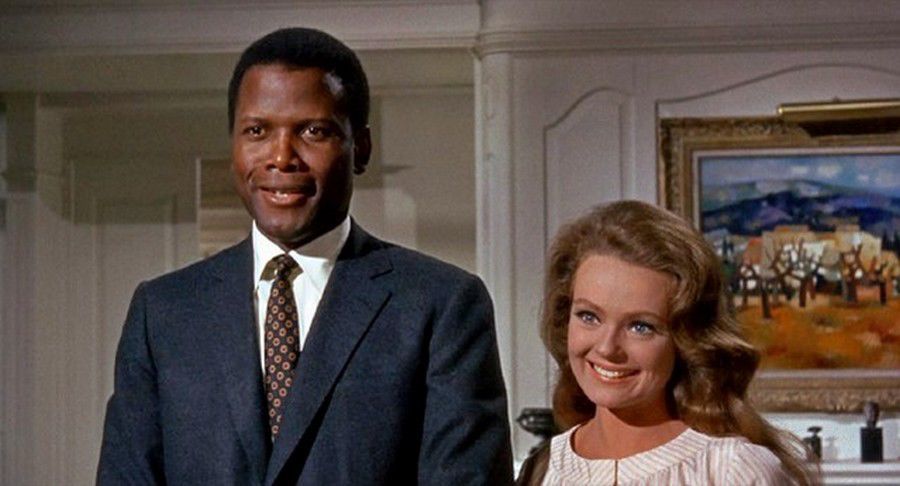

Dr. John Wayne Prentice (Sidney Poitier) and Joanna Drayton (Katherine Houghton) are deeply in love. Their love for each other is clear from the first frames of the picture, where the couple walk through the San Francisco airport together while laughing, smiling, and exchanging doe-eyed glances. As the story progresses, we come to know the couple perhaps better than they know each other, owing to the fact that they only met ten days prior while on separate trips to Hawaii. Their whirlwind romance will continue when, in two weeks time, the couple plans to marry in Geneva. In the meantime, they make a quick stop in San Francisco to share the happy news with Joanna’s parents, and ask for their approval.
The speed of their relationship might be enough to give most parents pause, as could their fourteen year age difference. However, neither issue raises as many eyebrows as the simple fact that John is black and Joanna is white. Joanna doesn’t expect this to be an issue for her parents. Her father, Matt (Spencer Tracy) is a liberal newspaper publisher who has spent his life fighting discrimination. He and his wife, Christina (Katherine Hepburn) raised their daughter to believe that white people were not inherently better than other races, and that people who say otherwise are stupid, hateful, and always wrong. Thanks to their progressive parenting, Joanna has grown up to be the picture of liberal idealism, a girl so accepting that she doesn’t even see color. Her parents, on the other hand, see John’s color quite clearly, and are shocked. While they harbor no ill will towards other races, they never expected that interracial marriage would ever be a problem they’d have to deal with directly. When John informs them that he will only proceed with the marriage if he has both of their unqualified support, they are put in the uncomfortable position of acknowledging their own hypocrisy as they struggle with the decision.
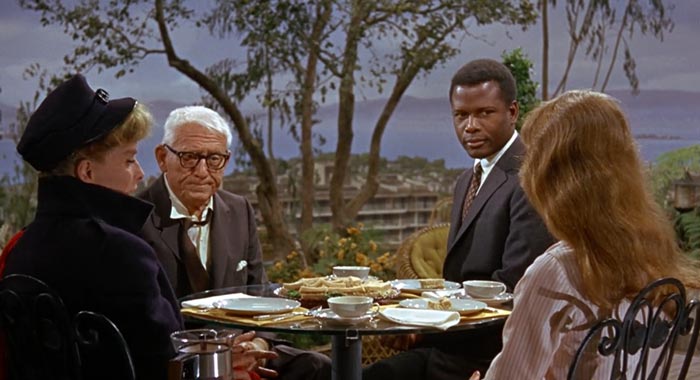

Despite Christina’s initial reaction to seeing John with her daughter, which can only be described as “deer in the headlights who still has time to pass judgement,” she comes around fairly quickly, cementing her resolve by firing a less-forward thinking employee. Matt, on the other hand, has a much more difficult time with the decision. On the one hand, he could not ask for a more impressive suitor. John is a smart, well-spoken doctor who works with the World Health Organization and has visionary ideas for mobile teaching hospitals. He is charming, polite, and hasn’t even gone to bed with Joanna, despite her enthusiastic willingness that she overshares with her mother. On the other hand, in 1967, or even in 2020, the rest of America is not always so understanding, and the couple will be setting themselves up for significant challenges. How will the rest of the world treat them? What challenges will their children face? These are not easy questions, and John finds no easy answers.
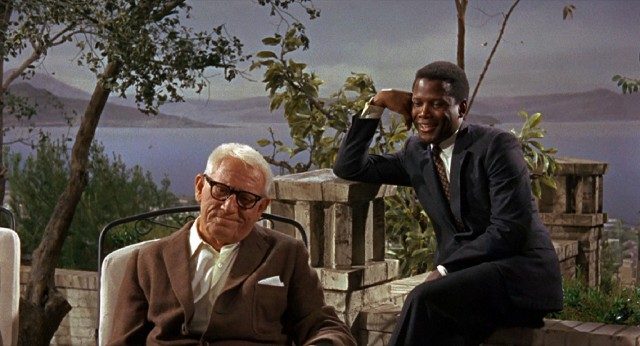

Guess Who’s Coming to Dinner is very much a product of it’s time, and not just because of the dated 60s aesthetic that permeates the film from its schmaltzy opening theme song to the literal go-go dancing meat delivery driver. It also feels a bit dated in its approach to the issue. Viewed in its historical context, the film is extremely progressive for tackling the issue of interracial marriage at a time when it was not widely accepted. The landmark Loving v. Virginia ruling that struck down anti-miscegenation came just a few weeks after filming was completed. For that reason alone, the film was groundbreaking. However, viewed through a more modern lens, the film can at times feel a bit too much like a white savior story. After all, Joanna’s white parents are given complete power over the decision, with the feelings of John’s parents or even the couple themselves being completely disregarded. Furthermore, Joanna is such an idealized modern woman that she doesn’t even see that there could be a problem with their relationship, while John must carry the burden of worrying about other people’s reactions by himself. While there is a certain degree of realism to the notion that the privileged white person is oblivious to and unable to fully empathize with problems that are outside of their experience, the film can at times feel like it’s taking too much agency away from its black characters.
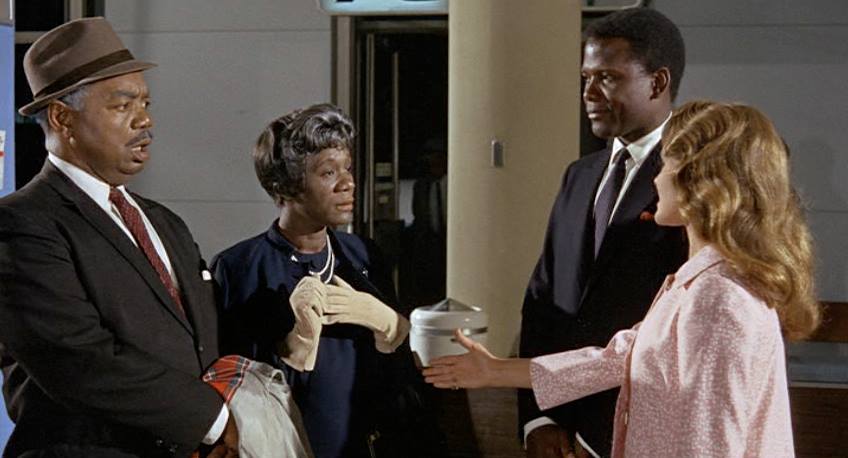

Even so, the film does enough right to make up for its shortcomings. By making John a nearly impossible model for human perfection, the characters are forced to tackle the question of race head-on without hiding behind questions of class or character. Similarly, by making parents self-avowed anti-bigots, it deals with an important kind of racism. Not the overt, screaming kind that people usually associate with the word, but with the more subtle, hypocritical kind that usually follows the phrase, “I’m not a racist, but…” Guess Who’s Coming to Dinner does not ask whether deeply racist people can change, but whether people who believe themselves to be good can live up to their own ideals and be the kind of people that they already claim to be. It’s an important question that remains an integral part of the dialogue today, and one that keeps the film relevant in the modern era.
VERDICT: 5 out of 5 stars.
Despite its shortcomings, Guess Who’s Coming to Dinner remains a classic. It boasts strong performances by heavyweights Poitier, Tracy, and Hepburn. Even Katherine Houghton is superb as she bubbles over with youthful exuberance and matches the depth of Hepburn’s mid-Atlantic accent in the process. While a great deal has changed since the film’s release, it speaks to continuing problems, and offers an accessible and enjoyable entry point into a very serious topic.
